When it comes to dominating rusty, stubborn, or frustratingly stuck nuts, there’s only one thing you can count on — an impact wrench! It will help you save considerable time, and you won’t even break a sweat. However, if you’re in the market for a reliable and durable model, keep in mind that there are many impact wrenches to choose from out there, and it can be pretty overwhelming if you don’t really know what you are looking for.
Luckily, this comprehensive buying guide will help you make an informed buying decision and choose whether you should go for an air or electric-powered impact wrench. But of course, that decision will be heavily influenced by two factors: the frequency of use and the type of work you do.
But let’s start from the beginning.
Table of Contents
Types of Impact Wrenches
Corded Electric Wrenches
As you might have guessed, corded impact wrenches can only be used if you have access to a power outlet. It’s a plug-in system, meaning you’re going to be leashed around that power source. Sure, they’ll do the job, but to be honest, they’re fast becoming redundant and have zero applications in the construction and automotive stratosphere.
Why? Well, they aren’t exactly portable, and you’ll always be bound to a certain work radius (basically the length of the cord). Yes, they might be fine for small, garage-based projects, but when talking about more significant tasks that require speed and mobility, they’ll be of no use.
[amazon fields=”B07QH3MBQ2″ value=”thumb” image_size=”large” image_alt=”CRAFTSMAN Electric Impact Wrench”]
As a matter of fact, corded wrenches can also be a work hazard; you could easily trip and fall over the cord if you aren’t careful — not worth the risk. Cordless impact wrenches are simply much better.
No need to mention that since they are pretty much not used at all in the automotive industry, we won’t be covering them here (I’m not even sure why someone might want one, honestly).
Cordless Electric Wrenches
Indeed, cordless wrenches are more comfortable to use and considerably smaller than their corded counterparts. And thanks to their battery, you can take cordless impact wrenches anywhere you want. In addition, cordless electric wrenches are far more flexible to maneuver compared to pneumatic impact wrenches. The fact that they don’t need a cord or air hose is really a big advantage. They are also designed to provide decent torque to remove the most stubborn bolts, screws, and nuts.
However, it’s essential to remember that cordless impact wrenches can quickly run out of juice and are not typically as powerful as air and corded wrenches. Still, the trick here is to buy more than one battery so when one runs out, you can just switch it and use another while this one charges.
Also worth mentioning, if you do decide to get a battery-powered impact wrench, make sure to get one with a brushless motor. Why? They are more reliable, generate less heat, and last significantly longer than other types—simple as that.
Pros
- Greater portability compared to air impact wrenches
- Added convenience and flexibility of use
- Ideal for working in hard-to-reach areas
Cons
- Don’t offer as much power as pneumatic wrenches
- Added weight at the bottom due to the extra battery takes a little getting used to
Air-Powered Impact Wrenches
The primary difference between battery-powered impact and air-powered wrenches is that the latter’s internal hammer is powered by compressed air instead of an electric motor, providing massive torque. Air impact wrenches also have fewer components making them much easier to repair when something goes awry.
However, to use a pneumatic impact wrench, you’ll also need a powerful air compressor, which can be a significant drawback for smaller garages and residential settings. The extra air hose is also a bit annoying, but after all, that’s what mechanics have used for the last century or so. In short, they are reliable and are ideal in most situations, but you’ll have to buy an air compressor.
That’s why you’ll see most mechanics, factory workers, and construction contractors use air impact wrenches. Sure, they’re heavier and bulkier than their electric counterparts, but none can match pneumatic models for power, and the constant air supply makes them perfect for long hours in the shop.
[amazon fields=”B0002UNR6W” value=”thumb” image_size=”large” image_alt=”Ingersoll Rand Air Impact Wrench”]
Pros
- Air impact wrenches provide significantly more power than electric impact wrenches (in most cases…)
- Ideal for static work (repair shops, construction sites, etc.)
- You’ll never have to worry about running out of juice
Cons
- Bigger and bulkier than electric impact wrenches
- Zero portability
- Require an air compressor
Differences Between Electric and Air Impact Wrenches
Weight
Winner: Cordless
When it comes to weight, cordless impact wrenches are clear winners here. They are designed for speed and portability and have lighter internal mechanisms—the battery makes them a bit bottom-heavy, though.
Meanwhile, air impact wrenches are pretty bulky and usually heavier. The internals are frequently made of metal, adding to the weight, and the air hose is often in the way. Still, they make up for their size by providing higher levels of torque (once again, not always the case… Battery-powered impact wrench are getting quite powerful nowadays).
Power
Winner: Pneumatic
This one isn’t that straightforward to answer, but we gotta give it to air-powered models. Pneumatic wrenches don’t rely on an internal hammer system and use compressed air to deliver the maximum torque, effortlessly unscrewing and loosening tighter nuts and bolts. Put simply, in most cases, they are more powerful than other types. Still, as mentioned above, battery-powered models are quickly catching up, and it might not be the case for long.
Regardless, if you need a lot of power, battery-powered wrenches will drain out rather quickly. For tough jobs, air-powered impact wrenches still reign supreme.
Maintenance
Winner: Cordless
You guessed it, cordless impact wrenches, of course—an easy win too. Electric motors simply don’t have a lot of parts to maintain. All you need to do is ensure the batteries are charged and ready. And even if the battery loses capacity at some point, you can purchase another one.
And because cordless wrenches are ideal to be used sporadically, you won’t have to worry about regular wear and tear. Pneumatic wrenches, on the other hand, can be a bit irritating to maintain. They’re bigger, need to be lubricated regularly, and some internal parts may need to be replaced from time to time.
However, it’s important to mention that electric motors can’t really be rebuilt as air impact wrenches can. Replacement parts are also much harder to find, so when something breaks, it’s usually simpler to just replace the whole thing.
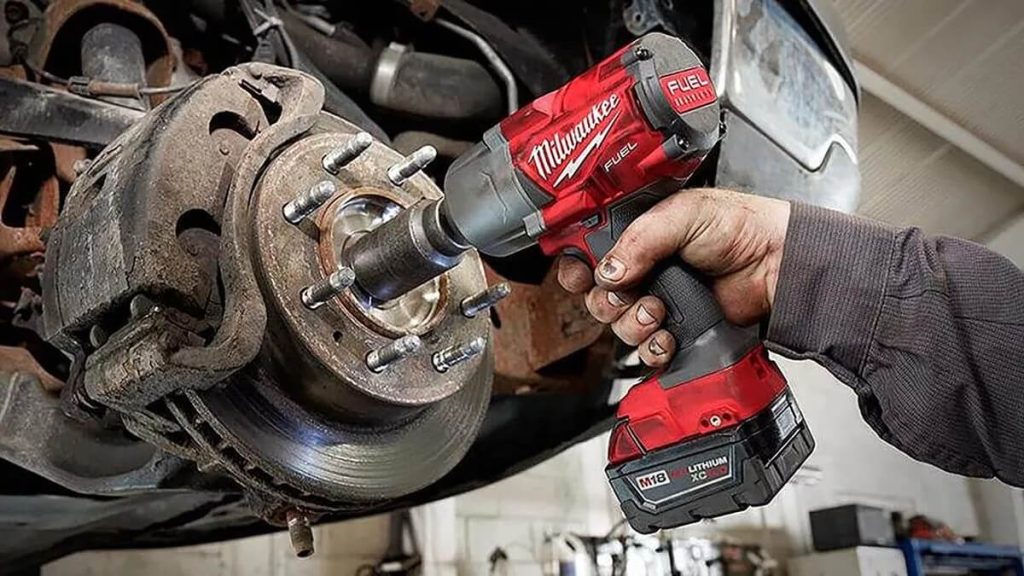
Convenience
Winner: Cordless
Cordless wrenches win again here. The extra weight of air impact wrenches makes them a bit uncomfortable to use for longer periods, also causing significantly more wrist fatigue. And because they generate so much force, they vibrate a lot more too.
Meanwhile, cordless wrenches offer greater flexibility and convenience, weighing only 2-3 pounds. Finally, thanks to the more compact size, you can use cordless wrenches in harder-to-reach areas, which is not to neglect.
Price
Winner: Tie
You may be surprised, but we went for a draw on this one. Air-powered impact wrenches are usually cheaper than battery-powered ones, but since you’ll have to buy an air compressor, an air hose, and a reel, well, they aren’t exactly cheap. Of course, you’ll be able to use that air compressor to use tons of other pneumatic tools, but the investment is still considerable.
The price range is also incredibly wide, from cheap $100 entry-level models to premium $1000 ones. Whatever you will go for really depends on your specific needs, frequency of use, and budget.
So let’s call it a tie and move on…
Overall Winner
Winner: Tie
Unfortunately, there’s no right or wrong answer here. Both come with their own set of pros and cons and are used for different purposes. For example, if you need an impact wrench for stationary jobs like working in your garage, then a pneumatic wrench might be your best bet, assuming you can install an air compressor in there. Sure, it will come with a couple of disadvantages, but there’s nothing that can beat an air impact wrench in terms of power and effectiveness.
However, if you’re looking for something considerably lighter and more portable, cordless electrical impact wrenches are the way to go. Please note that you might need a couple of batteries if you plan to use it 40 hours a week in the shop.
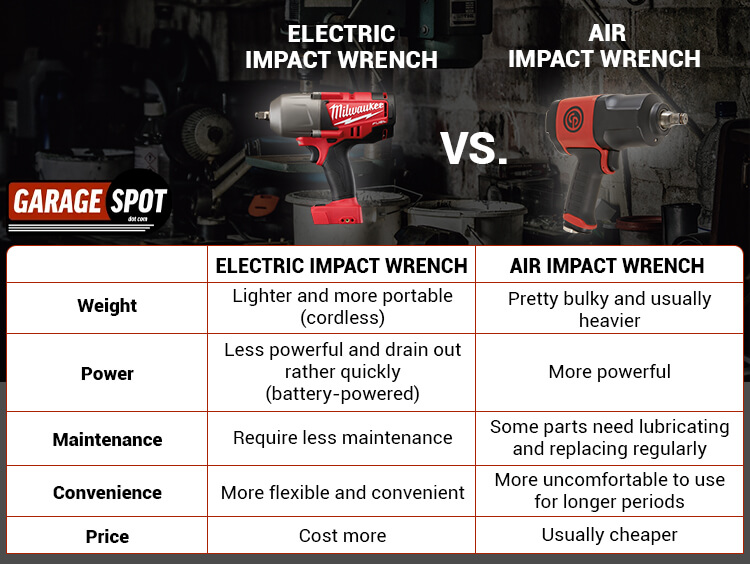
When Should You Use an Electric/Air Impact Wrench?
Impact wrenches have a myriad of applications and can be used for various work and repair tasks. However, they’re most commonly used in the automotive sector. Overall, when it comes to cordless impact wrenches, they should be used for:
- Working on more than one worksite (you’ll require more portability, speed, and flexibility)
- Doing repair work indoors
- Working in tight spaces or having to unscrew nuts and bolts in hard-to-reach areas
- When you don’t have access to an air compressor
- If you’re using an impact wrench for the first time
If you haven’t worked with an impact wrench before, you should probably go for a cordless electric wrench as it’s handy and lighter. Master using it and then move onto bulkier air impact wrenches for more extensive jobs. Not to mention that battery-powered wrenches are the future. If you are a young apprentice just starting in the field, you may be better getting used to the battery style since this is apparently where the industry is going anyway.
Pneumatic wrenches are far more powerful than electric wrenches. Sure, nowadays, you can find cordless electric models that may come a bit close to the type of power air impact wrenches provide, but again, you’ll have to rely on batteries. Here are a couple of scenarios where you should bring out the big guns:
- When you have to unscrew ridiculously, hell-bent nuts and bolts
- For most automotive repair jobs
- Working on a long-term job where portability doesn’t really matter
- If you have a bigger budget
- And if you actually have the room to install an air compressor
Last Words
In the end, it all boils down to two things — frequency of use and application. Impact wrenches are designed to do one thing and one thing only, removing stubborn, stuck, and seized bolts. So, with this logic, if you want to perform simple DIY tasks in and around the house or your garage, a cordless electric impact wrench will suit you best. However, if your work is more demanding, like in a professional auto repair shop, or involves removing nuts and bolts from heavy machinery all week long, go for an air impact wrench — you can’t go wrong with the old-school stuff.

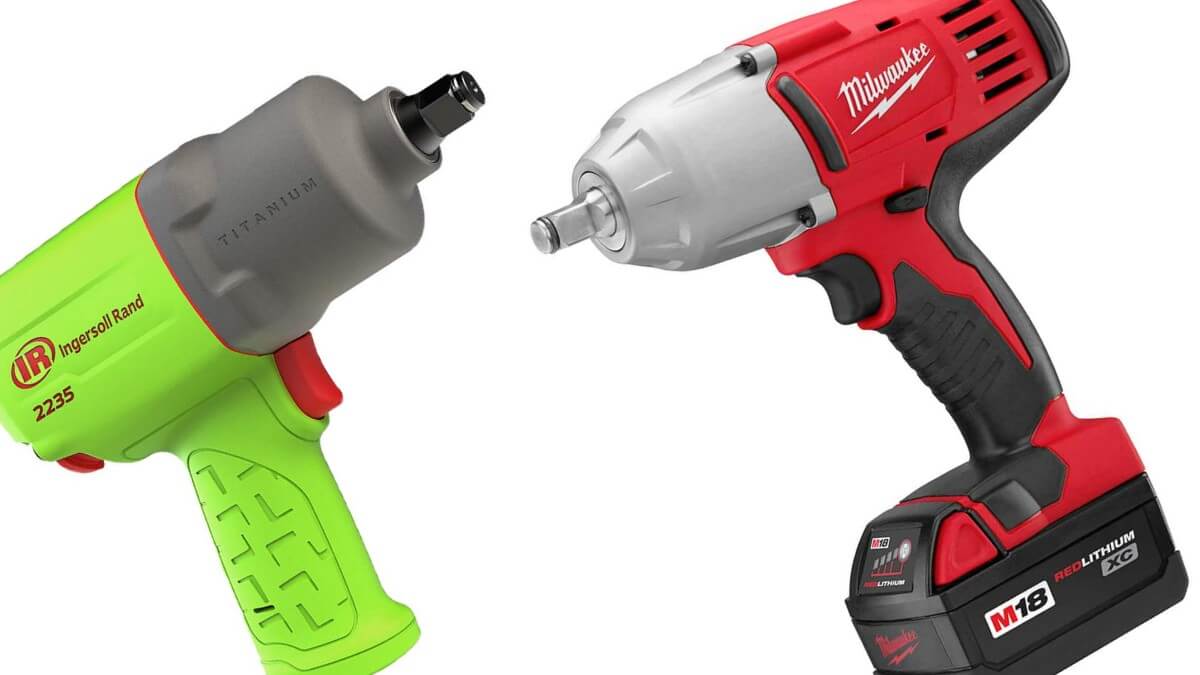
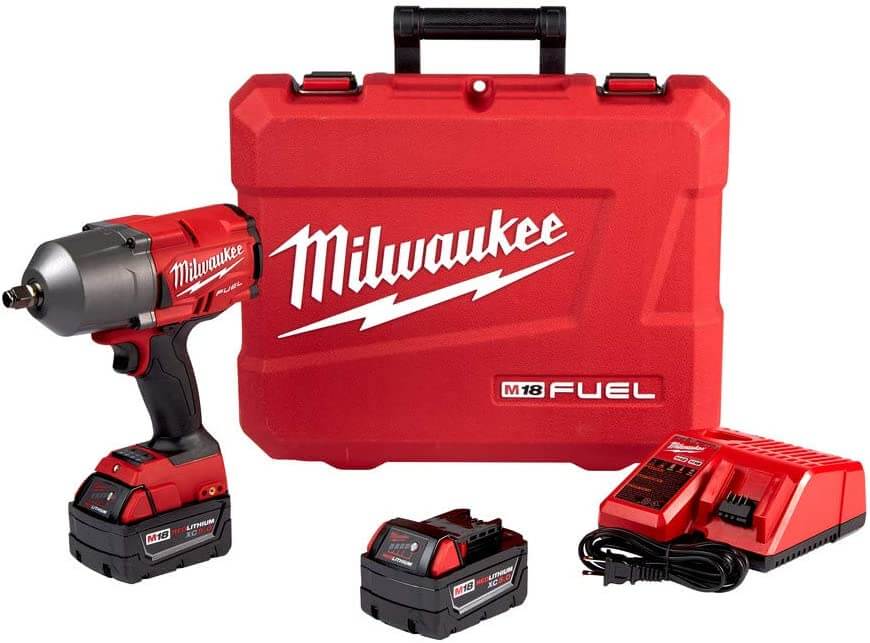
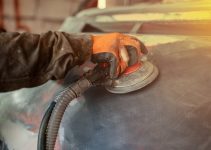
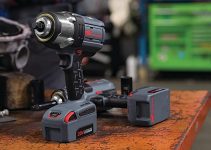

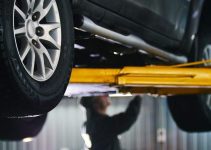
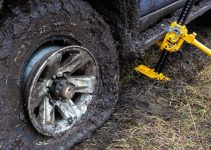
![Best Tire Changers for Amateurs and Professionals [2022 Review]](https://garagespot.com/wp-content/uploads/2022/01/Best-tire-changer-e1652905942544-compress-211x150.jpg)
Is cordless really the future though? We haven’t had any real advances in battery tech in the last 7 years. We’re still using 18650s wired together. In fact we’re going backwards. You can’t buy the individual batteries loose like you used to, you have to buy the branded pack, each brand takes it’s own battery pack, and needs its own charging system, so you’re forced to pick 1 brand and stay with it cuz lne battery pack can cost more than an entire air tool. China controls the world’s (limited) supply of metals needed to make them, Ryobi has already had to switch to Chinese batteries, putting $10 worth of unpredictable explosives into a box and charging $80 for them because you have no choice but to pay it if you want your tools to work. And you have to keep buying them because they don’t last more than a couple years and that’s only if you keep them topped up regularly, never let them get to 0%, never leave them in the cold or let them get hot, never let them sit on the charger or stay at full charge for too long, and never use the wrong charging block. Not to mention even the brushed motors themselves are only good for a few hundred hours of use themselves. Meanwhile I was shopping for used air tools and I was looking at an impact wrench that I thought was maybe a couple years old, looked just like new, worked like new, asked the guy when he bought it, was expecting him to say few months or last year. Nope. 1995 he says. Ended up giving him $20 for it. A whole tool that still looks like new after 25 years for less than a battery pack that won’t survive being stored in a garage in the winter. Try and get 25 years out of a cordless tool.
And the compressors, ya they can be pricey but for a reason. They’re built to last, and are actually worth maintaining. They don’t last forever, and you need to replace tanks and get an intercooler, but 2000 hours is nothing for a maintained air compressor, I’ve seen oilless compressors with 25,000 hours on them that have never been taken apart except to clean the filter.
Batteries are getting more dangerous, more expensive, and we have a limited supply of rare earth metals. We’ll never run out of air.
hum… I would tend to disagree here…
Yes, you can buy individual battery packs from pretty much any mainstream manufacturer, including DeWalt, Milwaukee, Makita, and so on… Yes, each brand takes its own battery pack, but that’s not really a problem if all your tools are of the same brand — that’s what I personally do and what most mechanics I work with also do. (And even that is not that true anymore — several battery brands have now started to produce batteries compatible with Milwaukee, DeWalt AND Makita…)
Yes, battery-powered tools usually cost more than air-powered models but the benefits they bring make a world of difference when working 40 hours a week in the shop… Just not having to deal with the air hose is already well worth the premium lol. Moreover, it would be pretty much the same with any premium tool — yes, some people choose to buy cheap Chinese knock-offs, while others prefer to pay for Snap-On. There’s no right or wrong answer here; to each his own!
Regarding the duration of the batteries, I can’t agree with you… I bought my Milwaukee M18 FUEL impact wrench more than 5 years ago, and the batteries are still running strong…
Regarding the duration of the brushed motors, that would be true — however, if you shop around a little, you would quickly notice that most battery-powered tools now use brushless motors… My Milwaukee impact wrench still works like a charm after 5 years, while my air-powered Ingersoll Rand died after only 4 — not to mention that you need to oil it every day and clean it every 6 to 8 months. I personally much prefer maintenance-free battery ones if you ask me…
(and as you can see in my other comment, when it broke down, I still bought a new IR impact… saying that I like battery-powered tools doesn’t mean there’s no use at all for air-powered ones… they each have their pros and cons, which was basically the point of this article)
If your air-powered impact wrench still works like new after 25 years, it only means it wasn’t used 8 hours a day, 40 hours a week in a shop during that time…
As for how dangerous batteries are, I personally have never seen one explode in my 15 years in the field…. And after all, petrol-powered cars also catch fire from time to time, I didn’t just start riding my bicycle to work because of that… 😉
But yes, there is a reason why manufacturers still sell both air-powered AND battery-powered power tools:
Because they are each valuable in different settings, each work better in specific scenarios and cater to different people (ever tried to use an air-powered impact to work on a tractor stranded in the middle of a field? Or what about the space saved in a mobile mechanic’s truck due to the lack of a compressor? I go battery-powered any day!).
Never forget that your specific needs and budget are not necessarily everyone else’s specific needs and budget…
Some people prefer batteries, others prefer air-powered ones; some people prefer to buy cheap secondhand tools, while others prefer premium ones.
And you know what’s the best thing about it? You can buy whatever you want! Nobody is telling you you shouldn’t buy air-powered tools if you prefer that… I don’t… And well, I wrote the post…
If you disagree with me, I would be more than happy to have you write your own take on the matter and publish it here… I don’t have THE answer… I only have my own, very personal opinion 😉🤷♂️
Air tools have another pro over electrics. Air tools are safe in wet environments, won’t be damaged if water drips on them and won’t shock anyone if the hose (vs cord) is damaged.
True! However, when talking about “electric” power tools, in most cases, we’re talking about “battery-powered” models, since well, I don’t think I’ve seen anyone using a corded electric impact wrench in the last 20 years! lol
So the risk of getting a shock from a battery-powered impact is virtually none, given that most models are also rather “waterproof” nowadays — sure I wouldn’t submerge one in water but doing the same would also be quite damaging for an air-powered impact wrench anyway…
But yeah, to each his own, I guess.
And I have to admit that I also still have my trustworthy air-powered Ingersoll Rand impact wrench… it’s really just that it didn’t see much action since I bought my Milwaukee M18 FUEL a couple of years ago. This thing is just incredible and quite resistant to water too. I live in Montréal, Canada so no need to say that our tools see a lot of water and salt in the shop during the cold winter months — still can’t find a single reason to go fetch that poor air-powered IR impact wrench, just lying there at the bottom of the tool chest.
I guess it can finally enjoy a nice retirement — thanks for the good work, it was fun while it lasted. You can finally rest now! 😉
Ya cordless battery packs won’t shock you if they get wet, theyll just stop working forever, require you buy a new battery pack, or just explode in a ball of fire
Same here… no idea what you are talking about… I’ve been working with my battery-powered Milwaukee M18 FUEL impact wrench in pretty much any weather; rain, hail, snow, dirt, mud; dropped it in pools of water 3 inches deep, left it under a car parked in the snow overnight, and it still works just fine!
Unless you are using your battery-powered impact wrench while scuba diving?